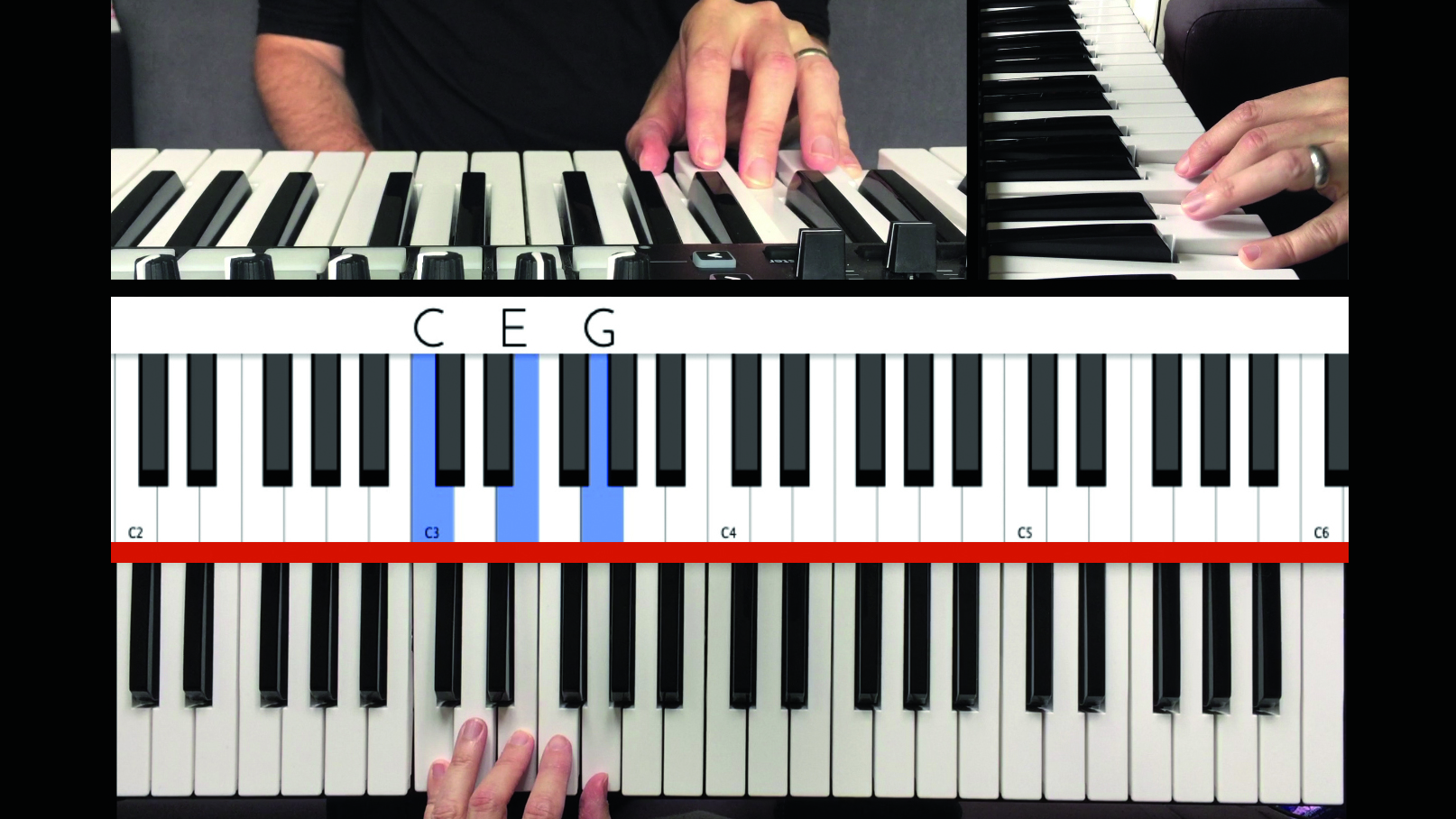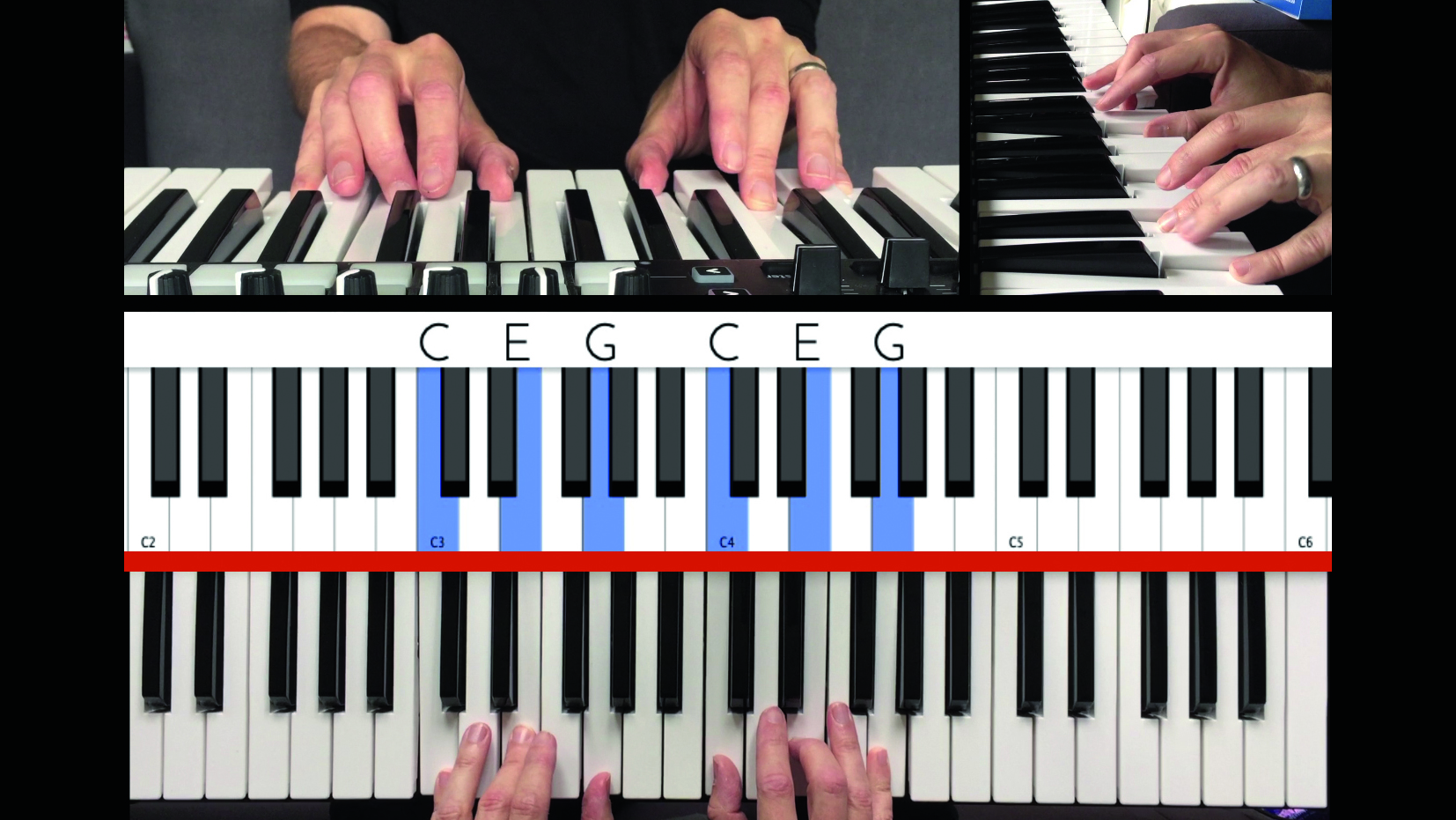How to play your first chords on a piano or MIDI keyboard
Get started by learning a C major triad

Chords are the building blocks of a lot of modern music, and the more of them you can play, the greater your songwriting prowess is likely to be.
Here, though, we're going to keep things very simple, showing you how to play your first chord - a C a major triad - on your piano, digital piano or MIDI keyboard.
Playing your first triad chords

Step 1: A chord is a number of notes played at the same time, and three notes played together is known as a triad chord. To play a C major triad, start by placing your right hand on the keyboard as shown above.

Step 2: The chord of C major is made up of notes C, E and G, so that corresponds to fingers 1, 3 and 5 in this position. The trick when playing a triad chord is to really focus on getting all three notes down at the same time, with equal weight, so to start off, just play the notes C and E together, as a two-note chord, with fingers 1 and 3.

Step 3: Play this combo through a few times to get the feel of it. Ensure that finger 2 doesn’t accidentally press the D key, hovering above the keys at all times, but without sticking out like a snail’s antenna as in the picture. Instead, focus on keeping the pressure on fingers 1 and 3 nice and even, while keeping finger 2 out of the way and relaxed.

Step 4: After getting the hang of this, swap to playing the notes C and G together using just fingers 1 and 5. This is known as a power chord, or power fifth, as we’ve removed the third from the chord. The little finger is usually the weakest to start with, so try and play both notes with equal strength.

Step 5: The difficulty many beginners face when playing chords is keeping the unused fingers clear of the keys that aren’t required - in this case it’s fingers 2, 3, and 4. To do this though, the temptation is to stick them out at a crazy angle, so try and keep them as relaxed as possible. Play the power chord a few times until comfortable.
Get the MusicRadar Newsletter
Want all the hottest music and gear news, reviews, deals, features and more, direct to your inbox? Sign up here.

Step 6: Time to combine these two techniques together to build our C major triad. We need to play the power chord again, but now with finger 3 involved. Placing your hand correctly over the five keys C to G, press down with equal weight on fingers 1, 3 and 5, to play the notes C, E and G, keeping 2 and 4 out of the way but still relaxed.

Step 7: Hold the chord for a second, then lift off and repeat, getting the three notes down cleanly and evenly without fingers 2 and 4 getting in on the act. Once you’re confident with framing the chord, set up a metronome or simple beat in your DAW and practise hitting the chord cleanly on the downbeat – beat 1 – of each bar.

Step 8: Time to get the left hand in. A C major triad played with the left hand at this point is a reversed version of the right hand, so the fingering for playing the notes C, E and G will be 5, 3 and 1. Work through the same process as the previous steps, but using the left hand, until you can confidently frame a chord with either hand.

Step 9: Finally, let’s bring the two hands together. Get the metronome or beat going once more and practise playing the chord with both hands on the downbeat until you are able to reliably get all the notes out with both hands at the same time. Start slowly and build up to a faster speed gradually as your confidence builds.
- Enter the digital realm with the best digital pianos
Computer Music magazine is the world’s best selling publication dedicated solely to making great music with your Mac or PC computer. Each issue it brings its lucky readers the best in cutting-edge tutorials, need-to-know, expert software reviews and even all the tools you actually need to make great music today, courtesy of our legendary CM Plugin Suite.










